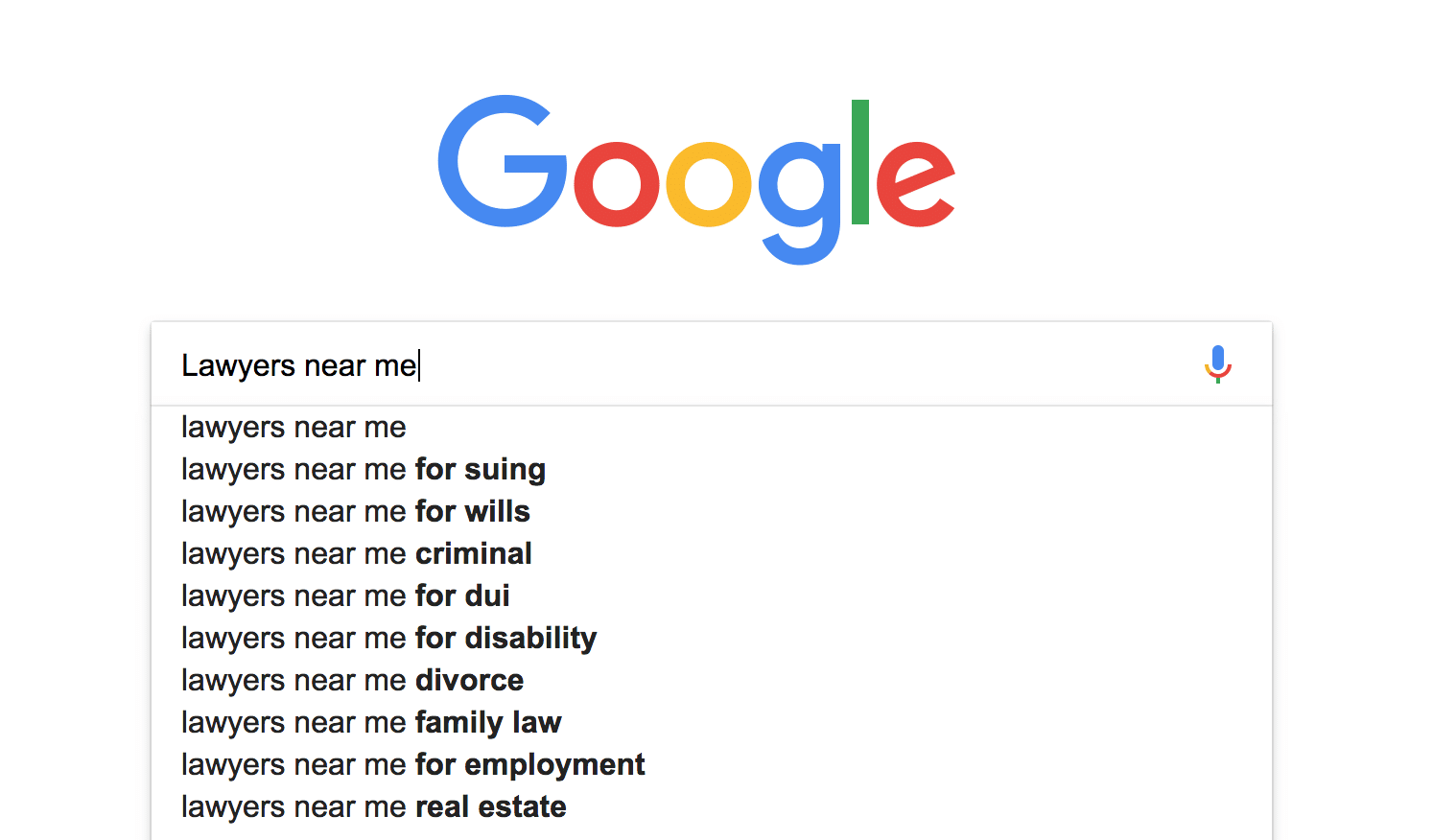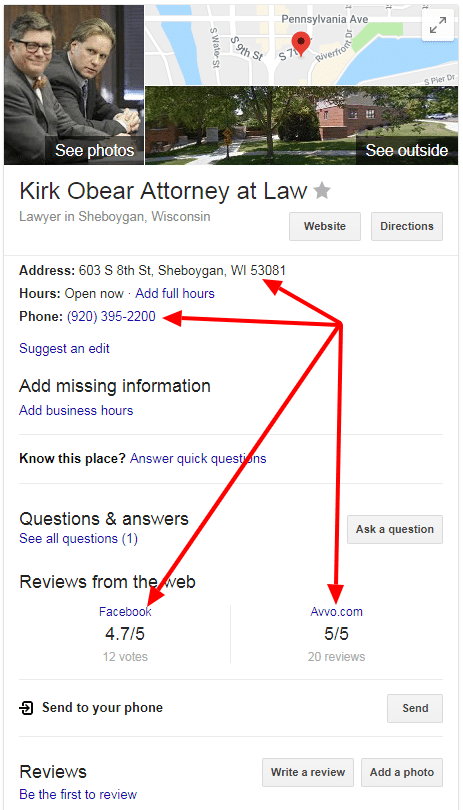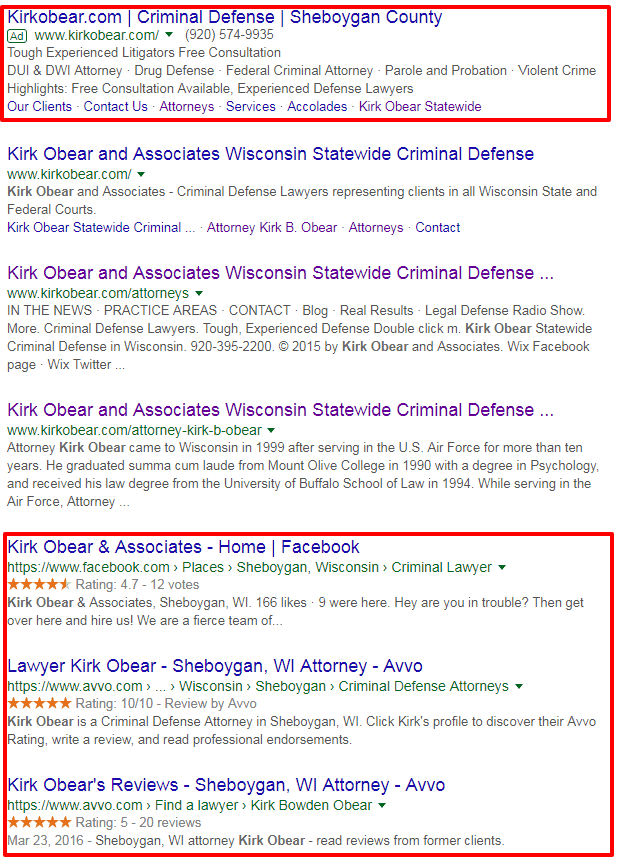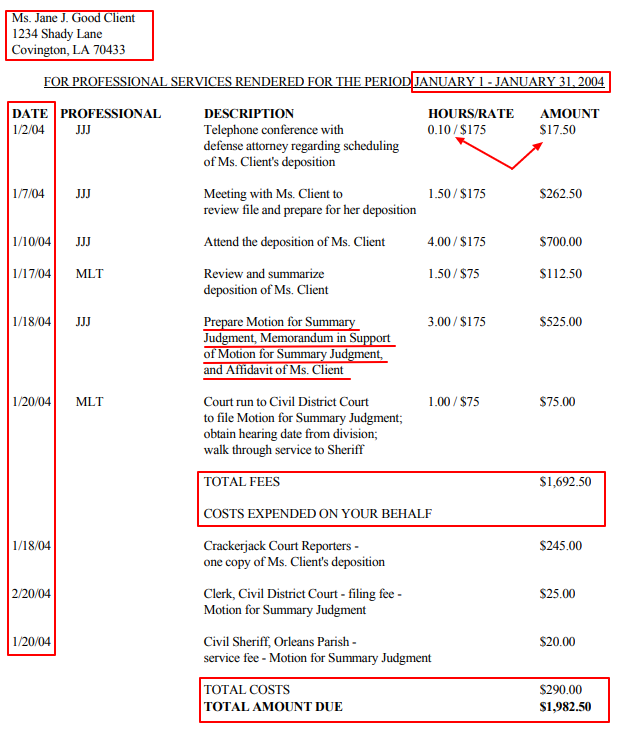Local SEO is a referral system that drives a consistent stream of prospective clients to your website. These clients come from local sources (digital and offline) that are willing and able to make referrals on your behalf.
How this referral system helps you:
- It minimizes business development costs
- Attracts clients who are able and willing to invest in your services
- Provides your law firm with steady channel partners you can rely on to grow your firm
- Reduces per lead costs consistently over time
- Increases return on ad spend (ROAS) costs
This is the secret weapon elite firms use to grow.
It’s quid pro quo relationships at scale; you’re able to attract, develop, and nurture a significant number of profitable relationships for your firm over time.
Here’s a condensed view that explains how it works.
Step #1: Choose a practice area
The Pareto distribution (80/20 rule) applies here. You’ll want to choose the practice areas that perform best for your law firm to take advantage of local SEO. If the vast majority of your work comes from real estate clientele, you’ll want to take note of that. If you’re looking to transition from one practice area to another, focus your attention there.
You must specialize first.
During this selection process, you’ll want to identify your value proposition, ideal price ranges, alternative fee arrangements, etc. In addition to the details above, you’ll also want to collect crucial information, including:
- Value proposition
- Firm history
- Attorney accomplishments
- Contact information
- Answers to client objections
- Social proof, credibility, and prestige markers
- Risk reversals
- Irresistible offers
- Promises and assurances (e.g., calls returned within 24 hours)
This is the information prospects look for before they decide to request a meeting. It’s a preliminary step that sets the tone for future actions.
Step #2: Create a list of local sources
Let’s say you’re a business and commercial lawyer based in Chicago. You’ll want to create a list of local sources that specifically focus on the Chicagoland area.
Here’s a sample list.
- City Club of Chicago, a speaker or group of speakers, addresses a forum of 1,540 members.
- Tenchnori is a startup focused club dedicated to educating would-be entrepreneurs.
- Tech Cocktail a classic showcase and mixer that hosts more than 15,000 attendees.
- American Club Association, is an invite-only club that emphasizes networking and mutually beneficial relationships.
- Vistage International Inc. is an exclusive, mastermind club with two-stage interviews and big-ticket rates.
- Chicago Latino Network a 50,000 subscriber group that’s focused on events and expert panels.
- Executives’ Club Of Chicago is a corporate and individual membership club with more than 1,500 C-suite and senior executives.
- Chicago Network is an invite-only club for women that’s focused on influential women in a variety of markets.
- Committee of 200 is another invite-only club for female entrepreneurs.
- Chicagoland Chamber of Commerce – networking that’s available to any Chicagoland business.
- Meetup and Career groups in Chicago, a category page that’s focused on smaller, more informal groups.
- Small business groups in Chicago
- Eventbrite networking groups and upcoming events.
- Avvo Q&A Answer questions on Avvo, and you raise your digital profile
- World Business Chicago, an economic development group and business development hub.
This isn’t a comprehensive list, but I think you get the idea.
Step #3: Select prominent keywords
Next, you’ll want to select an appropriate list of keywords. You can use SEO keyword research tools like:
You’ll want to build a list of general and location-specific, educational, transactional, and navigational keywords that are appropriate for your law firm, for example:
Education keywords
- Independent contractor law
- Suing clients for non-payment
- Dividing business assets
- Divorce business assets
Transactional keywords
- Small business attorney
- Small business attorney Chicagoland
- Small business attorney Chicago
- Small business attorney near me
Navigational keywords
- [Your name] law firm
- [Yourdomain] law firm
- Go [Yourdomain] lawyer
- Contact [Yourdomain] lawyer
The keywords you choose should be oriented around you, your firm, and your practice areas. If it’s directly related to any of these categories, you’ll want to add it to the list.
Step #4: Setup local SEO tripwires
Head over to Google.com/Alerts then enter in these keywords. You’ll want to enter your keyword phrase in quotes like this:
” Small business attorney Chicagoland”
If you’re monitoring keywords on a specific site you’ll want to structure your keywords like this:
” Small business attorney Chicagoland” AND site:domain.com
You can also use Follow that Page if you’d like to monitor the content on a particular website. For example, you can use Law.com to curate content. If Law.com writes about legal challenges for small businesses, you can discuss that content with the local sites on your list.
Write it, deliver a speech, create a video, etc.
Next, you’ll want to create content along with a content upgrade. A content upgrade is an additional piece of education that’s designed to draw prospective clients to your site. If you’re a business attorney writing about employee contract law, for example, you can provide small businesses with a content upgrade in the form of an employee law checklist for small businesses.
Here’s where the tripwires are created.
You’re going to use GaryVee’s content pyramid to scale this content and maximize the amount of value you receive from this piece of content. What’s a content pyramid?
GaryVee explains: “The ultimate goal of creating this presentation on my content model is to show you how my team took one of my keynotes, repurposed it into 30+ pieces of content, and then successfully distributed all of that content, resulting in over 35,000,000 total views.”
Here are the slides from his presentation.
GaryVee has a massive following on his social media accounts.
What if you don’t?
That’s an easy fix; just reach out to the list of sources you’ve collected above and syndicate the content for each source. This means you:
- Give them an unlisted link for your YouTube video
- Give them a list of 5 to 10 tweets, that they can send out on their Twitter profile.
- Do the same thing for each of your local sources, for each of their social media accounts.
- If they’re on a social media platform, you create a micro version of your content for them to share regularly, promoting your business indefinitely
- Once you’ve shared content with Local Source A, immediately ask Local Source B if they’d like to syndicate your content. You share your content with 10x more sources, but you only create it once!
- Make sure the majority of your content leads back to your law firm website in some way.
Whenever you see content on a large, popular site that relates to the keywords in your list, you create better content for your local sources that they can share with their entrepreneurs.
How do you multiply your content?
- If you host an event, make a speech, or run a workshop – record it.
- Take that recording and turn it into an mp3.
- Transcribe your recordings and turn them into a blog post or ebook.
- Pull 5 to 10 quotes from that blog post then turn them into tweets, status updates, Instagram posts, etc.
Do this, and you’ll be seen everywhere in your local community. With 10 hours of work per month, you can ensure that your business will be seen everywhere in your local community.
This is the power of the local SEO traffic pump.
Local SEO can be incredibly profitable for your law firm
But it all depends on your referral system.
The right referral system drives a steady stream of prospective clients to your website. These high-value clients come from local sources (digital and offline) that are willing and able to refer your business to their audience. Provide them with the kind of value they’re looking for, and you’ll find their audience becomes yours.
Do this, and you join an elite group.
As we’ve seen, 75 percent of lawyers see attracting clients as a significant challenge. With the right referral system, you’ll have everything you need to attract a never-ending supply of leads and clients.


















